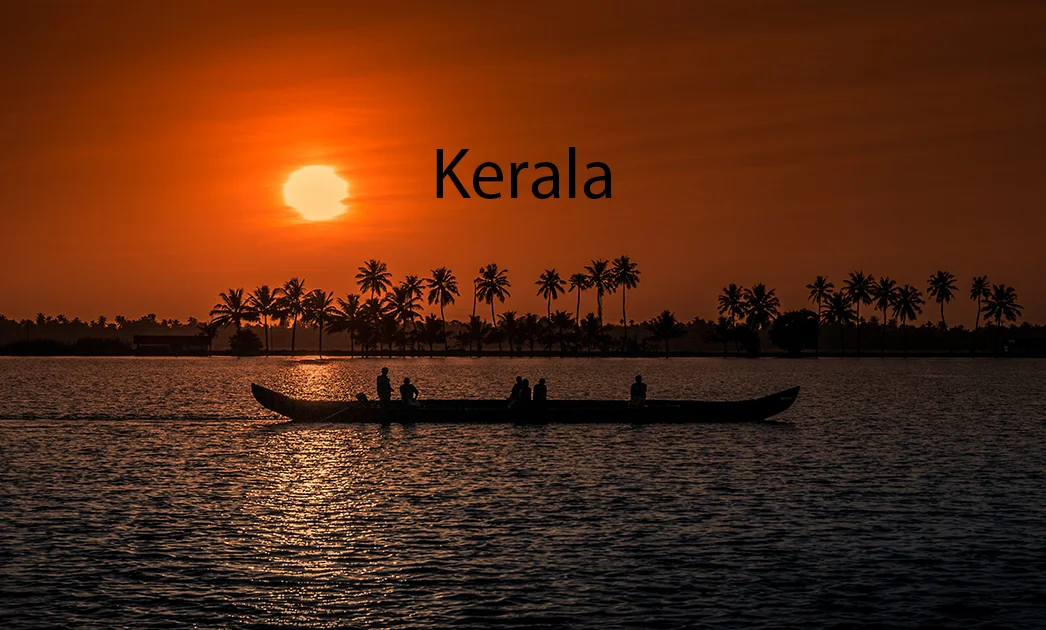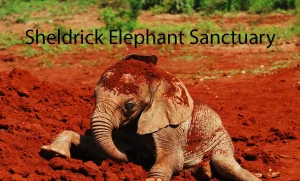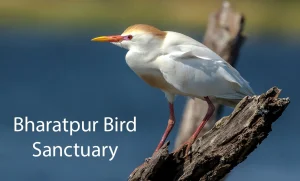Kerala
Where is Kerala Located?
Kerala is located in southwestern India, stretching along the coastline of the Arabian Sea. Shaped like a narrow strip of land, it occupies a total area of 38,863 square kilometers. Kerala shares borders with Karnataka to the north, Tamil Nadu to the east and the Lakshadweep sea to the west. Its landscape consists of scenic beaches, tranquil backwaters, lush hill stations and sprawling spice and tea plantations.
Climate and Weather
Kerala enjoys a tropical climate, being located close to the equator. It experiences high temperature and humidity levels along the coast while the hills have a cooler and pleasant weather. There are mainly two monsoon seasons – Southwest monsoon from June to August bringing rains from the Arabian Sea and Northeast monsoon from October to November bringing rainfall from the Bay of Bengal. Annual rainfall ranges between 300 cm to 400 cm across various regions of Kerala.
History and Origin Of Kerala
The history of Kerala dates back to the Stone Age. Ancient Tamil and Sanskrit literature praise the Chera dynasty that ruled over parts of Kerala before the Common Era. After the Chera empire disintegrated by the 12th century, small chieftaincies gained power eventually consolidating to establish the modern Kerala state in 1956. Kerala has managed to preserve its vibrant culture and heritage across changing political landscapes and foreign invasions by various colonial powers – mainly the Portuguese, Dutch and eventually the British.
Cultural Heritage and Ethnic Groups
Kerala boasts a rich cultural diversity as it assimilated populations from various ethnic backgrounds over 2000 years. The major communities settling across Kerala were native tribal groups, Nambudiri Brahmins, Nairs, Syrian Christians and Muslims who came as traders from Arabia. The state also has one of the oldest Jewish diasporas in India as well as early Christian converts by St.Thomas. Intermingling of people from various communities like Tamils, Konkanis, Kodavas, Saurashtrians etc. also added to the composite culture seen today.
Population Statistics and Demographics
As of 2024, Kerala has a population of about 38 million, making it the 13th most populous state in India. The population density is high at 860 persons per sq km. Kerala has a literacy rate of over 96%, the highest in India. Life expectancy is 77 years, which is among the highest in the country. The sex ratio is favorable towards women at 1084 females per 1000 males as per the 2024 census. Kerala’s population growth rate has stabilized around 4% per decade. The state has witnessed significant emigration and a large diaspora population around the world.
Languages and Literature
Malayalam Language
Malayalam is the official and most widely spoken language in Kerala. It is one of the 22 scheduled languages of India and belongs to the Dravidian family of languages. The modern form of Malayalam emerged around 9th century CE. The oldest literary work in Malayalam is Ramacharitam, dated to 12th century CE. Malayalam uses a script derived from Brahmi and has an extensive vocabulary incorporating many loan words. The language has official status in Kerala and Lakshadweep islands. As per the latest census, over 35 million people speak Malayalam as their first language.
Prominent Authors and Literary Works
Some prominent Malayalam authors include Thakazhi Sivasankara Pillai, O V Vijayan, M T Vasudevan Nair, Kamala Surayya, Sanjayan, and KR Meera among others. Well-known literary works in Malayalam include Chemmeen, Naalukettu, Khasakkinte Itihasam, Aatujeevitham, and more. Malayalam literature has been presented with the highest award of Jnanpith multiple times.
Arts and Culture
Performing Arts and Music
Various dance forms like Kathakali, Mohiniyattam, Koodiyattam, and Theyyam are popular in Kerala. Kathakali involves elaborate costumes, masks and makeup to enact stories from Hindu epics. Mohiniyattam is a classical feminine dance form adopting lyrical graceful movements. Prominent musical instruments used in Kerala music are Chenda, Kombu, Edakka etc. Many musical geniuses including Shadkala Govinda Marar and Swathi Thirunal Rama Varma have originated from Kerala.
Visual Arts and Handicrafts
Murals and frescoes adorn many ancient temples, palaces and churches across Kerala. Notable painting styles that emerged in Kerala include Kerala mural painting and Raja Ravi Varma painting. The intricate Aranmula Kannadi (metal-coated mirror) is a GI tagged handicraft specialty of Kerala. Other popular handicrafts include netturpetti (coconut shell craft), kasavu sarees, Kathakali masks, elephant sculptures and more.
Cuisine
Common Ingredients: Coconut, rice, tapioca, spices like black pepper, cardamom, cloves, ginger and curry leaves are commonly used in Kerala cuisine. Seafood especially fish like sardines, mackerel and prawns are widely consumed across coastal Kerala. Banana chips, jackfruit chips and seekh kababs are popular snacks.
Popular Dishes and Specialties: Sadhya, a vegetarian feast served on a banana leaf is a specialty for festive occasions. Common dishes are avial, thoran, pulissery, payasam, appam, puttu, idiyappam and more. Kerala parotta and beef curry is very popular among locals and tourists. Seafood delicacies include karimeen pollichathu, kappa and meen vevichathu, mussels and crab masala.
Influence of Various Communities
Kerala cuisine has been influenced by various communities like Syrian Christians who introduced meat dishes, Arab traders who brought in biriyani, Malabari Muslims who make excellent biryani and pathiri, and Malayalee Brahmins who follow vegetarianism.
Festivals and Celebrations
Prominent festivals celebrated in Kerala, besides national holidays, include Onam, Vishu, Thrissur Pooram, Nehru Trophy Snake Boat Race, Navratri, Diwali, Christmas, Eid etc. Festivals often include magnificent processions, fireworks, feasts, sports and cultural events. Temple festivals are celebrated with great fervor at the famous Sabarimala, Guruvayur, Kodungallur, Thrissur and Parassinikadavu temples attracting devotees from all over.
Religions and Belief Systems
As per 2024 data, Hindus comprise about 55% of Kerala’s population followed by Muslims at 27% and Christians at 18%. A small population follows Jainism, Sikhism, Buddhism and other beliefs. The state’s cosmopolitan society allows harmonious co-existence of diverse faiths. Besides modern religions, some tribal communities worship rain gods and snake gods at small shrines.
Tourism
Kerala is called ‘God’s Own Country’ for its immense natural beauty and rich cultural heritage. Tourism is a major industry here with backwaters, beaches, hill stations, wildlife sanctuaries, historic sites, and festivals being the biggest attractions.
Beaches and Backwaters
Kerala beaches like Kovalam, Varkala attract tourists with palm-fringed shores, ayurvedic resorts and water sports. Alappuzha is renowned for serene backwater houseboat stays while Kumarakom charms with scenic lagoons. Govt initiatives like Responsible Tourism have augmented eco-options benefitting locals via homestays, village tours etc. though concerns regarding carrying capacity exist requiring planning.
Kovalam Beach: Kovalam is one of the most famous beaches in Kerala known for its crescent shape and shallow waters. It has three adjacent beaches – Lighthouse Beach, Hawah Beach, and Samudra Beach. The beach offers many water activities like surfing, boating, and swimming.
Varkala Beach: Varkala Beach is a cliff beach renowned for its natural spring water which is considered to have medicinal properties. It is also an important Hindu pilgrimage site with the Janardan Swamy Temple located close to the beach.
Alappuzha Backwaters: Alappuzha is famous for its scenic backwaters, houseboats, and snake boat races. A houseboat cruise along the backwaters allows visitors to experience the local life and natural beauty of this region up close.
Kumarakom: Kumarakom is a charming village located on the banks of Vembanad Lake. It is known for its peaceful backwater resorts, houseboats, mangrove forests, and bird sanctuary that attracts migratory birds.
Houseboat Stays: A popular way to experience the Kerala backwaters is by staying overnight on a traditional houseboat or kettuvallom. These boats with all modern amenities allow you to cruise through the backwaters in luxury.
Hill Stations
Munnar, Wayanad and Thekkady are popular hill destinations drawing honeymooners and wildlife enthusiasts. Plantation tours offering treks through tea estates and spice gardens provide unique experiences. However issues like water scarcity, waste management have impacted locals at some spots needing sustainable models balancing commercial interests.
Munnar: Munnar is a beautiful hill station known for its lush tea estates, pristine valleys, exotic flora and fauna. Activities like trekking, cycling, camping, and wildlife safaris are popular here. The average temperature is around 25 degree Celsius.
Wayanad: Wayanad is a nature lover’s paradise nestled among the mountains of the Western Ghats. Major attractions here include Edakkal Caves, Chembra Peak, Banasura Sagar Dam, and wildlife sanctuaries like Muthanga and Tholpetty.
Thekkady: Thekkady is situated close to the Periyar National Park and is a great place to experience wildlife like tigers, elephants, sambar, and lion-tailed macaques. Trekking and boating are some activities tourists can partake in here.
Wildlife Sanctuaries
The Periyar sanctuary has various animals including tigers that can be spotted on guided lake tours. Eravikulam national park also safeguards endangered Nilgiri Tahr attracting visitors to the Rajamala hills. Though commercial establishments stayed outside earlier, pressure to allow constructions nearby now threatens biodiversity needing strong safeguards.
Periyar National Park: Located in Thekkady, this is Kerala’s most popular wildlife sanctuary known for a significant tiger and elephant population. Bamboo rafting, jungle patrol, trekking and safaris are conducted here.
Eravikulam National Park: This park located in Munnar is home to endangered species like Nilgiri Tahr along with elephants, leopards, and Atlas moths. Trekking and camping are major tourist activities permitted here.
Historic and Religious Sites
The Dutch Palace and Jewish synagogue in Kochi showcase Kerala’s history as a vibrant trading port. Padmanabhaswamy temple treasures also intrigued archeologists while Basilica church highlights Portuguese-influenced architecture. Temple arts festivals organized by the tourism board attract global audiences though maintaining heritage integrity remains a key challenge with rising stakeholders.
Mattancherry Palace: Also known as the Dutch Palace, Mattancherry Palace is a Portuguese palace located in Kochi showcasing Kerala’s Hindu temple art style. Portraits, royal artifacts and murals depicting Ramayana and Mahabharata can be seen here.
Padmanabhaswamy Temple: Located in Thiruvananthapuram, Padmanabhaswamy temple is one of the most famous Lord Vishnu temples in India known for its intricate stone carvings and architecture. Only Hindus are allowed inside.
Jewish Synagogue: Located in Kochi, the Paradesi Synagogue was built in 1568 making it the oldest synagogue in the Commonwealth. It has a religious artifacts museum and brilliant interiors.
Santa Cruz Basilica: This basilica located in Fort Kochi is a famous Christian pilgrimage site in India. The intricate architecture and artifacts along with the brilliant paintings make it a popular tourist spot.
Museums and Monuments
Museums like Hill Palace offer glimpses into the past especially royal traditions documenting culture, arms and artifacts over centuries. Period renovations, digitization projects have helped preserve history better while also enhancing visitor experience via audio guides, VR shows etc though retaining authenticity amidst commercialization needs balance.
Festivals and Events
Flagship events like Kochi Muziris Biennale promote contemporary arts alongside traditional forms, placing Kerala globally as a leading cultural destination. Food festivals showcasing regional cuisine also see growing popularity. However issues like waste generation from elaborate events need sustainable solutions.
Accommodation and Transport
Various tourist zones have world-class hotels, resorts catering to luxury travelers too while mid, budget options exist driven by rising demand over years. Better road, air connectivity and emergence of seaplane services have augmented access enabling extension to hitherto remote destinations for sustainable development provided carrying capacity limitations are respected.
Challenges and Future Scope
Tourism has high growth potential but needs balanced planning addressing rising issues like environmental impact, benefit distribution across local communities etc. Promoting lesser known destinations, showcasing village life and channelizing revenue for public infrastructure remain key priorities for the government alongside drawing private investment to upgrade hospitality infrastructure responsibly and equitable access to entrepreneurial opportunities for young locals.
Economy of Kerala
Kerala has a mixed economy that leans heavily towards the services sector. While agriculture and fishing continue to be important, sectors like tourism, IT, healthcare and financial services are growing rapidly. Kerala has the highest per capita income among Indian states.
Contribution of Different Sectors
The services sector contributes the most to Kerala’s economy at over 60% of GSDP. This is followed by industry at 27% and agriculture at 12%. Tourism, IT and financial services are major service sector industries. Manufacturing, construction and utilities form the bulk of industrial output. Crops, livestock, forestry and fishing dominate the agricultural sector.
Agriculture and Major Crops
Agriculture employs 28% of Kerala’s labor force. Major crops are rice, coconut, rubber, pepper, banana, tapioca, coffee and tea. Kerala is a leading producer of spices like pepper, cardamom, vanilla, cinnamon and nutmeg. Coconut is cultivated extensively with Kerala producing over 70% of India’s coconut. Rubber, coffee, tea and cashew are other major plantation crops.
Fishing and Marine Products
With its long coastline, fishing is an important economic activity. Kerala accounts for over 20% of India’s marine fish catch. Major exports are shrimp, sardines, mackerel, tuna, crabs and lobsters. The government aims to increase seafood exports from INR 5000 crores in 2022 to INR 10,000 crores by 2025.
Mining Resources
Mineral resources in Kerala include ilmenite, rutile, zircon, monazite, sillimanite, clay and silica sand. The state has reserves of 55 million tonnes of ilmenite ideal for titanium extraction. China and Japan are major export markets for Kerala’s rutile and ilmenite. Recent policy changes hope to boost mining and curb illegal sand mining.
Manufacturing and Key Industries
Manufacturing employs only 15% of Kerala’s workforce but contributes 27% of GSDP. Food products, textiles, chemicals, rubber, metals, electronics and electrical machinery are major industries. Kerala has over 900 IT firms focusing on software development, digital services and emerging tech like AI and blockchain.
Banking and Financial Services
Headquartered in Kerala, Federal Bank, South Indian Bank, Dhanlaxmi Bank and CSB Bank are leading private banks with nationwide presence. The Life Insurance Corporation, headquartered in Kochi, is another major financial institution. Kerala has among the highest penetration of banking services in India.
Trade, Exports and Ease of Business
Kerala’s main exports are marine products, plantation crops, spices, cashews, coir and handicrafts. UAE, US and European nations are major export destinations. The state ranks 21st in India for ease of doing business as per government rankings. The current LDF government aims policies to further improve the investment climate.
Infrastructure of Kerala
Transport Networks
Roads, Railways, Airports and Seaports: Kerala has a good network of roads, railways, airports and seaports that connect various parts of the state.
The total length of roads in Kerala is around 200,000 km including national highways, state highways, district roads and rural roads. National Highway 66 and National Highway 544 are the major national highways passing through Kerala. Kochi port and Vallarpadam terminal are the major seaports while Thiruvananthapuram International Airport, Kochi International Airport and Kozhikode Airport are the main airports.
Indian Railways has a good network in Kerala connecting major cities and towns. Thiruvananthapuram Central railway station is the main railway station along with Ernakulam Junction, Kozhikode railway station and Kollam Junction. The Konkan Railway passes through Kerala connecting Mangalore and Mumbai.
Communication Networks
Kerala has a modern and robust communication network consisting of telephone, mobile and internet services. BSNL, Airtel, Vodafone Idea and Jio are the major telecom service providers in Kerala.
According to latest statistics, there are over 3.5 crore mobile connections in Kerala with a tele-density of over 100%. Internet penetration is high with around 50% of households having access to broadband connections. Average internet speeds in Kerala range from 5-10 Mbps.
Energy and Power Supply
Kerala meets most of its power requirements from hydroelectric power projects in the state. Idukki, Idamalayar and Poringal hydroelectric projects supply around half of Kerala’s power needs. The remaining power comes from central grid and other renewable sources like solar.
Kerala State Electricity Board (KSEB) is responsible for power transmission and distribution. Over 80% of households in Kerala have access to electricity due to rural electrification programs. Renewable energy capacity in Kerala stands at around 1500 MW currently.
Urban Infrastructure
Water Supply, Sanitation, Healthcare
Kerala has made good progress in providing access to water supply and sanitation. Around 85% of households have access to clean drinking water . The state has achieved high sanitation coverage with over 95% of households having toilets.
Healthcare infrastructure is well developed in Kerala with quality primary health centers present in rural areas. The state has the best healthcare indicators in terms of infant mortality rate, maternal mortality rate and life expectancy. The high literacy levels combined with public health initiatives have improved the overall healthcare standards.
Environment of Kerala
Kerala is located in the southwestern corner of India. It is known for its lush green forests, pristine beaches, serene backwaters and rich biodiversity. Kerala has a tropical climate with heavy rainfall during the monsoons.
Forests, Flora and Fauna
Kerala is home to a variety of forests including tropical wet evergreen forests, tropical moist deciduous forests, shola forests and mangroves. Popular tree species found here include teak, rosewood, sandalwood, ebony and bamboo. Kerala has over 4,000 flowering plant species and is considered one of the biodiversity hotspots in the world. The state is home to elephants, tigers, leopards, gaurs, sambar deer, sloth bears, Nilgiri langurs and lion-tailed macaques among other wildlife. Kerala also has a rich avifauna with over 500 species of birds inhabiting its forests and wetlands.
National Parks and Wildlife Sanctuaries in Kerala
Some of the prominent national parks and wildlife sanctuaries in Kerala include Periyar National Park, Eravikulam National Park, Silent Valley National Park, Chinnar Wildlife Sanctuary, Wayanad Wildlife Sanctuary, Parambikulam Wildlife Sanctuary and Thattekad Bird Sanctuary. These protected areas provide habitats for endangered and endemic wildlife of Kerala. As per 2022 data, the total protected forest area in Kerala is around 29,800 sq km which is about 27% of the state’s geographical area.
Beaches, Backwaters and Water Bodies
Kerala has beautiful beaches lined with palm trees including Kovalam, Varkala, Marari, Bekal and Cherai. The serene backwaters of Kerala spread over 900 km are popular tourist attractions located mainly around Alappuzha, Kumarakom, Kottayam and Kochi. Major rivers of Kerala include Periyar, Bharathapuzha, Pamba and Chaliyar. Some of the important lakes in Kerala are Vembanad lake, Ashtamudi lake, Sasthamkotta lake and Vellayani lake.
Environmental Issues and Conservation Efforts
Some of the environmental issues faced by Kerala include deforestation, landslides, water pollution and threats to biodiversity. The Kerala State Biodiversity Board was formed in 2010 to regulate activities related to conservation of biological resources and associated knowledge. The government, NGOs and local communities are undertaking various awareness programs and sustainable initiatives to protect Kerala’s environment. The green cover has increased from 11,801 sq km in 2015 to 15,767 sq km in 2019 as per state government estimates.
Governance and Administration in Kerala
Political History and Leaders
Kerala has a long history of decentralized governance. The modern state of Kerala was formed in 1956 after the States Reorganisation Act. Since then, it has been dominated by coalition governments led by the Indian National Congress and the Communist Party of India (Marxist).
Some prominent political leaders from Kerala include:
-
- E.M.S. Namboodiripad – The first Chief Minister of Kerala and a long-time leader of the CPI(M). He served as CM three times.
- K. Karunakaran – Served as CM of Kerala four times between 1977-1995. He was a senior Congress leader.
- A.K. Antony – Served as Kerala CM three times between 1977-2004. He later served in various capacities at the national level.
- V.S. Achuthanandan – A CPI(M) leader who served as CM of Kerala from 2006-2011. He was the oldest CM of Kerala at 93 years of age.
- Oommen Chandy – Served as Kerala CM from 2004-2006 and 2011-2016. He was a senior Congress leader.
- Pinarayi Vijayan – The current CM of Kerala since 2016. He is a senior CPI(M) leader.
Local Self-Governance
Panchayati Raj Institutions
Kerala has a three-tier panchayat raj system consisting of Gram Panchayats at the village level, Block Panchayats at the block level and District Panchayats at the district level.
-
- There are 941 Gram Panchayats, 152 Block Panchayats and 14 District Panchayats in Kerala as of 2024.
- Panchayat elections are held every 5 years. The last elections were held in 2020.
- 50% of seats are reserved for women in the panchayats.
- Kerala has achieved almost 100% financial decentralization with panchayats planning and implementing various development projects funded by the State Finance Commission and Central Finance Commission grants and allocating welfare pensions.
- Kerala’s panchayats have won national awards for e-governance, poverty alleviation and empowerment of marginalized sections. The Kudumbashree poverty eradication program is implemented through panchayats.
Law and Order
Kerala has one of the lowest crime rates in India, with 133 crimes reported per 1 lakh population in 2022.
The Kerala Police is headed by the State Police Chief. There are two main subordinate wings – the Armed Police and the Civil Police.
-
- Women make up over 10% of the state’s police force. There are all-women police stations in every district.
- Hi-tech initiatives like CCTV surveillance, e-beat system, pink police patrols etc have improved policing.
- However, organized crimes, political violence between party workers, incidents of mob violence over social media posts have increased in recent years.
Policy Reforms and E-governance Initiatives
Kerala has a high e-literacy rate of around 90% and high internet penetration, which has enabled extensive e-governance reforms.
-
- Some major e-governance projects include e-District, FRIENDS portal for citizen services, e-Treasury, e-Procurement system, etc.
- Akshaya centres provide government e-services to citizens at the panchayat level.
- Policy reforms to support startups, boost tourism, modernize education through smart classrooms and improve healthcare access have been undertaken.
- However, high debt levels, fiscal deficits, red tapism, labor issues remain challenges.




